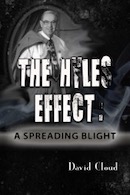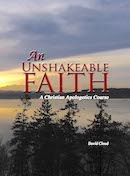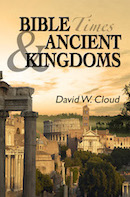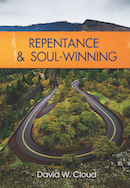866-295-4143, fbns@wayoflife.org
They are the keepers of both the Great Isaiah Scroll and the Aleppo Codex.
The Masoretic text was preserved by Hebrew scribes prior to the invention of printing by moveable type in the 15th century. (The first printed Hebrew Bible appeared in 1488.)
The Shrine of the Book was opened in 1965 by the Israel Museum, only 17 years after the War of Independence. Its national importance is evident by the fact that it is located in a prominent place in Jerusalem near the Israeli Parliament (the Knesset).
The roof of the museum is in the shape of the lid of the clay jars that protected the Dead Sea Scrolls, and the corridor leading into the museum resembles a cave. The brilliant white of the museum’s roof contrasts sharply with the black wall nearby, signifying the warfare between the Sons of Light and the Sons of Darkness described in writings of the Essenes community found among the Dead Sea Scrolls. The Essenes cult wrongly thought of itself as the true Sons of Light, and the modern state of Israel does not understand the real significance of such things. But the Bible held in the Shrine of the Book teaches that there is a war between truth and error, light and darkness, and that it will culminate at the return of Christ.
It is most amazing and wonderful that the two greatest witnesses to the authenticity of the Masoretic Bible are located in the Jewish Shrine of the Book in the modern state of Israel, because it was to the Jews that God assigned the task of preserving the Hebrew Bible. In Romans 3:1-2 Paul calls the Hebrew Old Testament the “oracles of God” (“oracles” means utterance), and tells us that these oracles were committed to the Jews. Though the Jews did not obey the Scripture, they revered it. Josephus and Philo “assure us that they would have undergone all sorts of torments rather than have taken a letter from the Scripture, or altered a word of it” (John Kitto, Illustrated History of the Bible, edited by Alvan Bond, 1908, p. 39). Countless Jews have died in their zeal to protect and preserve the Old Testament Scripture.
This reverence was placed in their hearts by the God of the Bible for the purpose of its preservation.
In particular, it was the Jewish priests who were assigned as the keepers of the Scriptures (Deut. 31:24-26; 17:18).
After the Babylonian captivity there was a revival within the Jewish priesthood (Ezra 7:10) and the Old Testament Scriptures were preserved. “By Ezra and his successors, under the guidance of the Holy Spirit, all the Old Testament books were gathered together into one Old Testament canon, and their texts were purged of errors and preserved until the days of our Lord’s earthly ministry. By that time the Old Testament text was so firmly established that even the Jews’ rejection of Christ could not disturb it” (Dr. Edward Hills, The King James Bible Defended, 4th edition, p. 93).
Following the destruction of Jerusalem in AD 70, it was Jewish rabbis called Tannaim (teachers) who guarded the Old Testament Scriptures. These scribes “copied the text of the Old Testament with great accuracy” (Edward Hills, The King James Bible Defended, 4th edition, p. 93). The Tannaim were followed by the other scribes called Amoraim (expositors). Though they exalted Pharisaical tradition above Scripture in practice, they highly revered the Scripture and preserved it from generation to generation. (It was during this time that the Talmud was produced, which canonized the very type of rabbinical tradition that Jesus condemned in Matthew 15:3-9.)
Beginning in the sixth century, it was THE MASORETES (traditionalists) who jealously guarded the Hebrew text and passed it down from generation to generation. It is the Masoretic Hebrew Bible that was adopted by Christians and used in the first printed Bibles.
The Masoretes were families of Hebrew scholars who were based in Tiberias after the destruction of Jerusalem in AD 135 by Rome at the end of the Second Jewish War. The traditional Hebrew Masoretic text gets its name from these scholars.
The most famous Masorete was Ben Asher, who “labored to produce a correct copy of the Scriptures.” From the 12th century forward the Ben Asher text was the received Hebrew Bible.
Fearful of losing the correct verbalization of the Hebrew words through the Jewish dispersion, the Masoretes added verbalization marks to the text.
The Masoretes exercised great care in transcribing the Old Testament. They developed stringent rules for copying in order to keep the text pure. The following rules are from General Biblical Introduction by Herbert Miller (1937), with information added from other sources.
- The parchment must be made from the skin of clean animals; must be prepared by a Jew only, and the skins must be fastened together by strings taken from clean animals.
- Each column must have no less than 48 nor more than 60 lines. The entire copy must be first lined.
- The ink must be of no other color than black, and it must be prepared according to a special recipe.
- No word or letter could be written from memory; the scribe must have an authentic copy before him, and he must read and pronounce aloud each word before writing it.
- He must reverently wipe his pen each time before writing the word for “God” (Elohim) and he must wash his whole body before writing the name “Jehovah” lest the Holy Name be contaminated.
- Every word and every letter was counted, and if a letter was omitted, an extra letter inserted, or if one letter touched another, that section of the manuscript was condemned and destroyed. A Masoretic Hebrew manuscript of Genesis contains 4,395 lines in 43 columns, with 27,713 words and 78,100 letters.
Miller concludes with this observation: “Some of these rules may appear extreme and absurd, yet they show how sacred the Holy Word of the Old Testament was to its custodians, the Jews (Rom. 3:2), and they give us strong encouragement to believe that WE HAVE THE REAL OLD TESTAMENT, THE SAME ONE WHICH OUR LORD HAD AND WHICH WAS ORIGINALLY GIVEN BY INSPIRATION OF GOD” (General Biblical Introduction, 1937, p. 185).
The Great Isaiah Scroll
The Great Isaiah Scroll was found in Cave 1 at Qumran near the Dead Sea in 1947. It contains the entire book of Isaiah. It was written on 17 pieces of sheepskin sewn together to form a scroll measuring about 24 feet in length. It resides at the Shrine of the Book, and a realistic facsimile is on display in the main room. It has been dated at least four times by the carbon-14 method and the results have ranged from 335 to 107 BC. Other dating techniques (e.g., writing material and style, associated artifacts) have dated it to 150-100 BC. Thus it was written at least a century before Christ, if not two or three centuries.
Every book of the Old Testament was found in the Dead Sea Scrolls except the book of Esther, and sixty to sixty-five percent of the scrolls represent the Masoretic text. This is amazing since the earliest Hebrew codexes of the Masoretic text used by scholars in the 16th and 17th centuries (such as the Aleppo) were written more than a thousand years after the Dead Sea Scrolls. The differences between the conservative Dead Sea scrolls and the Masoretic text are extremely minor, largely pertaining to spelling or grammar, the omission or addition of a word, or the mixing of Hebrew letters. For example, one of the two Isaiah scrolls found in Cave 1 leaves out one “holy” from Isaiah 6:3, obviously a scribal oversight. Comparing Isaiah 53 in the Great Isaiah Scroll of 100 BC and the Apello Codex of AD 900, there are only three letters that differ. As for the Great Isaiah Scroll and its agreement with the Masoretic text, Dr. Ernst Wurthwein calls it “striking” and Adolfo Roitman calls it “extraordinarily close” (Wurthwein, The Text of the Old Testament, 1979, p. 144; Roitman, The Bible in the Shrine of the Book, 2006, p. 43).
The Aleppo Codex
The other great witness to the authority of the Masoretic Hebrew Bible at the Shrine of the Book is the Aleppo Codex (known in Hebrew as Ha-Keter, meaning the Crown). It was made in about AD 900-920 in Tiberias, which became the center of Jewish scholarship in Israel after the razing of Jerusalem.
The Aleppo manuscript was copied by Shlomo (Solomon) Ben Boya’a, and the vowel markings were added by Aaron ben Asher.
For nearly 1,000 years it “was used as the standard text in the correction of books” while “generations of scribes made pilgrimages to consult” it (Roitman, p. 62).
About 100 years after it was completed, it was given as a gift to the Jews in Jerusalem. After the Roman Crusaders conquered Jerusalem in 1099 and established the Crusader kingdom, they captured the Codex and took it to Egypt, where it was purchased by the Jews.
It resided at a synagogue in Cairo until 1375, when it was moved to the synagogue in Aleppo, Syria. There it resided in a double-locked metal box in “the Cave of Elijah” (according to Jewish tradition, Elijah was exiled there). The keys were held by two prominent men and the box could only be opened in the presence of both men on the authority of the synagogue’s leaders. It was used as the touchstone of Hebrew Bible purity.
On December 2, 1947, after the adoption of the UN resolution authorizing the establishment of the Jewish state, the Aleppo synagogue was destroyed by rampaging Muslims during the riots that broke out all over the Arab world. The rioters broke into the iron box and ripped pages from the Codex and threw it on the floor. Most of the Pentateuch was lost, as well as some other portions. Someone recovered the damaged Codex, and it was hidden for the next several years. In 1958 it was smuggled to Turkey hidden in a washing machine, and from there brought to Jerusalem. It was laboriously restored over a six-year period by the Israel Museum and today is on display in the Shrine of the Book.
Scholars now admit that the Masoretic text was the standard Hebrew Bible at the end of the Second Temple period. This has been proven not only by the Dead Sea Scrolls but also by scrolls found at Masada, Wadi Murabba’at, Nahal Hever, and Nahal Tze’elim. Adolfo Roitman says the Masoretic “apparently became the authoritative text for mainstream Judaism toward the end of the Second Temple period” (The Bible and the Shrine of the Book, p. 56).
In light of Romans 3:1-2, that is a major admission! Liberal scholars see the Masoretic text and the competing Septuagint and Samaritan texts as representing equally legitimate texts. They believe it is only because the rabbis banned the former that the Masoretic text won out. They see it as an accident of history. For example, Geza Vermes says, “[The existence of both Masoretic and Septuagint texts in the Dead Sea Scrolls] suggests that in the Qumran age Hebrew texts corresponding to the Samaritan and the ancient Greek versions jointly circulated, thus buttressing the theory that the proto-Masoretic, Samaritan and Septuagint-type of Hebrew text forms happily co-existed before rabbinic censorship eliminated the last two around 100 CE” (The Story of the Scrolls, p. 106).
This is almost exactly what liberal New Testament scholars believe about the Alexandrian Greek text. They think that the Traditional Greek Text underlying the Protestant Bibles won out merely because it was proclaimed official by church councils and pushed by church authorities. They hold this view because they do not believe that the Old and New Testaments were given by divine inspiration and preserved by the same God who authored them. The Bible to them is a purely human product, and in studying it they only consider the human element.
But in light of Paul’s statement in Romans 3:1-2 and the many promises in Scripture that God would preserve His Word, we know that God was superintending the transmission of the Old Testament, and God led the Jewish rabbis, even in their unbelief and spiritual blindness, to preserve the Masoretic Bible. (For an extensive study on Bible preservation see our book Faith vs. the Modern Bible Versions.)
The Jewish authorities that operate the Shrine of the Book believe that the exhibition of the Aleppo Codex is the fulfillment of Isaiah 2:3: “... for out of Zion shall go forth the law, and the word of the LORD from Jerusalem” (“The Wandering Book: The Aleppo Codex”).
In fact, this great prophecy will be fulfilled at the return of Christ when “the mountain of the LORD’s house shall be established in the top of the mountains, and shall be exalted above the hills; and all nations shall flow unto it” (Isaiah 2:2). It is obvious that this does not refer to our day when Israel is one of the most despised of nations on the face of the earth!
Both the Great Isaiah Scroll and the Aleppo Codex have been digitized and are available at the Israel Museum’s web site: http://www.imj.org.il/shrine_center/
- Receive these reports by email
- www.wayoflife.org
______________________
Sharing Policy: Much of our material is available for free, such as the hundreds of articles at the Way of Life web site. Other items we sell to help fund our expensive literature and foreign church planting ministries. Way of Life's content falls into two categories: sharable and non-sharable. Things that we encourage you to share include the audio sermons, O Timothy magazine, FBIS articles, and the free eVideos and free eBooks. You are welcome to make copies of these at your own expense and share them with friends and family. You may also post parts of reports and/or entire reports to websites, blogs, etc as long as you give proper credit (citation). A link to the original report is very much appreciated as the reports are frequently updated and/or expanded. Things we do not want copied and distributed are "Store" items like the Fundamental Baptist Digital Library, print editions of our books, electronic editions of the books that we sell, the videos that we sell, etc. The items have taken years to produce at enormous expense in time and money, and we use the income from sales to help fund the ministry. We trust that your Christian honesty will preserve the integrity of this policy. "For the scripture saith, Thou shalt not muzzle the ox that treadeth out the corn. And, The labourer is worthy of his reward" (1 Timothy 5:18). Questions? support@wayoflife.org
Goal:Distributed by Way of Life Literature Inc., the Fundamental Baptist Information Service is an e-mail posting for Bible-believing Christians. Established in 1974, Way of Life Literature is a fundamental Baptist preaching and publishing ministry based in Bethel Baptist Church, London, Ontario, of which Wilbert Unger is the founding Pastor. Brother Cloud lives in South Asia where he has been a church planting missionary since 1979. Our primary goal with the FBIS is to provide material to assist preachers in the edification and protection of the churches.
Offering: Offerings are welcome if you care to make one. If you have been helped and/or blessed by our material offerings can be mailed or made online with with Visa, Mastercard, Discover, or Paypal. For information see: www.wayoflife.org/about/makeanoffering.html.





